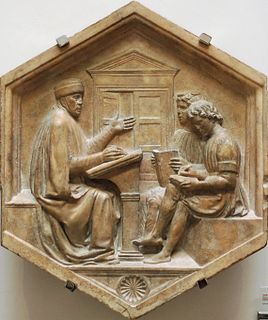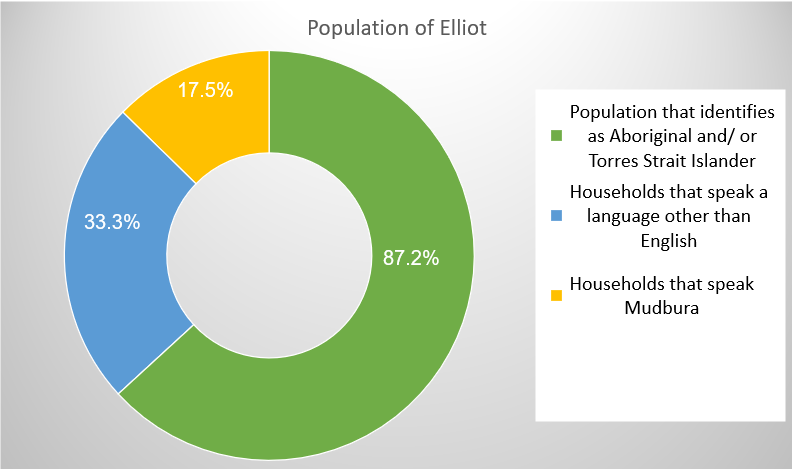The Finnish language is spoken by the majority of the population in Finland and by ethnic Finns elsewhere. Unlike the languages spoken in neighbouring countries, such as Swedish and Norwegian, which are North Germanic languages, or Russian, which is a Slavic language, Finnish is a Uralic language of the Finnic languages group. Typologically, Finnish is agglutinative. As with other Uralic languages, Finnish has vowel harmony, and like other Finnic languages, it has consonant gradation.

Latin is a heavily inflected language with largely free word order. Nouns are inflected for number and case; pronouns and adjectives are inflected for number, case, and gender; and verbs are inflected for person, number, tense, aspect, voice, and mood. The inflections are often changes in the ending of a word, but can be more complicated, especially with verbs.

Oromo is an Afroasiatic language that belongs to the Cushitic branch. It is native to the Ethiopian state of Oromia and spoken predominantly by the Oromo people and neighbouring ethnic groups in the Horn of Africa. It is used as a lingua franca particularly in Ethiopia and northeastern Kenya.
An interrogative word or question word is a function word used to ask a question, such as what, which, when, where, who, whom, whose, why, whether and how. They are sometimes called wh-words, because in English most of them start with wh-. They may be used in both direct questions and in indirect questions. In English and various other languages the same forms are also used as relative pronouns in certain relative clauses and certain adverb clauses. It can also be used as a modal, since question words are more likely to appear in modal sentences, like
Warrongo is an Australian Aboriginal language, one of the dozen languages of the Maric branch of the Pama–Nyungan family. It was formerly spoken by the Warrongo people in the area around Townsville, Queensland, Australia. Its last native speaker was Alf Palmer, who died in 1981.

Kalau Lagau Ya, Kalaw Lagaw Ya, Kala Lagaw Ya, or the Western Torres Strait language, is the language indigenous to the central and western Torres Strait Islands, Queensland, Australia. On some islands, it has now largely been replaced by Torres Strait Creole.
Georgian grammar has many distinctive and extremely complex features, such as split ergativity and a polypersonal verb agreement system.
Nyangumarta, also written Njaŋumada, Njangamada, Njanjamarta and other variants, is a language spoken by the Nyangumarta people and other Aboriginal Australians in the region of Western Australia to the south and east of Lake Waukarlykarly, including Eighty Mile Beach, and part of the Great Sandy Desert inland to near Telfer. As of 2016 there were an estimated 211 speakers of Nyangumarta, down from a 1975 estimate of 1000.
Hindustani, the lingua franca of Northern India and Pakistan, has two standardised registers: Hindi and Urdu. Grammatical differences between the two standards are minor but each uses its own script: Hindi uses Devanagari while Urdu uses an extended form of the Perso-Arabic script, typically in the Nastaʿlīq style.

Wagiman, also spelt Wageman, Wakiman, Wogeman, and other variants, is a near-extinct Aboriginal Australian language spoken by a small number of Wagiman people in and around Pine Creek, in the Katherine Region of the Northern Territory.
Standard Kannada grammar is primarily based on Keshiraja's Shabdamanidarpana which provides the fullest systematic exposition of Kannada language. The earlier grammatical works include portions of Kavirajamarga of 9th century, Kavyavalokana and Karnatakabhashabhushana both authored by Nagavarma II in first half of the 12th century.
Old Norse has three categories of verbs and two categories of nouns. Conjugation and declension are carried out by a mix of inflection and two nonconcatenative morphological processes: umlaut, a backness-based alteration to the root vowel; and ablaut, a replacement of the root vowel, in verbs.
Gurindji is a Pama–Nyungan language spoken by the Gurindji and Ngarinyman people in the Northern Territory, Australia. The language of the Gurindji is highly endangered, with about 592 speakers remaining and only 175 of those speakers fully understanding the language. There are in addition about 60 speakers of Ngarinyman dialect. Gurindji Kriol is a mixed language that derives from the Gurindji language.
Marra is an Australian Aboriginal language, traditionally spoken on an area of the Gulf of Carpentaria coast in the Northern Territory around the Roper, Towns and Limmen Bight Rivers. Marra is now an endangered language. The most recent survey was in 1991; at that time, there were only 15 speakers, all elderly. Most Marra people now speak Kriol as their main language. The remaining elderly Marra speakers live in the Aboriginal communities of Ngukurr, Numbulwar, Borroloola and Minyerri.

The Yukulta language, also spelt Yugulda, Yokula, Yukala, Jugula, and Jakula, and also known as Ganggalidda, is an extinct Tangkic language spoken in Queensland and Northern Territory, Australia. It was spoken by the Yukulta people, whose traditional lands lie on the southern coast of the Gulf of Carpentaria.
Jingulu (Djingili) is an Australian language spoken by the Jingili in the Northern Territory of Australia, historically around the township of Elliot. Other languages spoken in the West Barkly family include Wambaya, Gudanji, Binbinka, and Ngarnka. When the Mudbarra arrived to the region the Jingili live, a cultural fusion group arose named Kuwarrangu, while the Jingilu and Mudbarra cultures still remained separate. Based on geographical proximity, the Jingili and other ethnic groups have related languages with common vocabulary.
Zotung (Zobya) is a language spoken by the Zotung people, in Rezua Township, Chin State, Burma. It is a continuum of closely related dialects and accents. The language does not have a standard written form since it has dialects with multiple variations on its pronunciations. Instead, Zotung speakers use a widely accepted alphabet for writing with which they spell using their respective dialect. However, formal documents are written using the Lungngo dialect because it was the tongue of the first person to prescribe a standard writing, Sir Siabawi Khuamin.
Djaru (Tjaru) is a Pama–Nyungan language spoken in the south-eastern Kimberley region of Western Australia. As with most Pama-Nyungan languages, Djaru includes single, dual and plural pronoun numbers. Djaru also includes sign-language elements in its lexicon. Nouns in Djaru do not include gender classes, and apart from inflections, words are formed through roots, compounding or reduplication. Word order in Djaru is relatively free and has the ability to split up noun phrases. The Djaru language has a relatively small number of verbs, as compared to most languages, and thus utilizes a system of 'preverbs' and complex verbs to compensate. Djaru also has an avoidance language. Avoidance languages, sometimes known as ‘mother-in-law languages’, are special registers within a language that are spoken between certain family members – such registers are common throughout native Australian languages. The population of Djaru speakers has greatly diminished since the late 19th century when white settlers entered the Djaru region and massacred its inhabitants. The Djaru people have since adopted certain aspects of western living and have moved away from the daily practice of certain traditional ways of living. As a result, the Djaru language faces the combined pressures of a decrease in speaker population, an increased reliance of English among its speakers, as well as a white Australian government that has traditionally stood against the use or education of any original Australian languages.
This article concerns the morphology of the Albanian language, including the declension of nouns and adjectives, and the conjugation of verbs. It refers to the Tosk-based Albanian standard regulated by the Academy of Sciences of Albania.
Turkmen grammar is the grammar of the Turkmen language, whose dialectal variants are spoken in Turkmenistan, Iran, Afghanistan, Russia, China, Uzbekistan, Tajikistan and others. Turkmen grammar, as described in this article, is the grammar of standard Turkmen as spoken and written by Turkmen people in Turkmenistan.






